Minuartia rubella (Boreal Sandwort) - photos and description
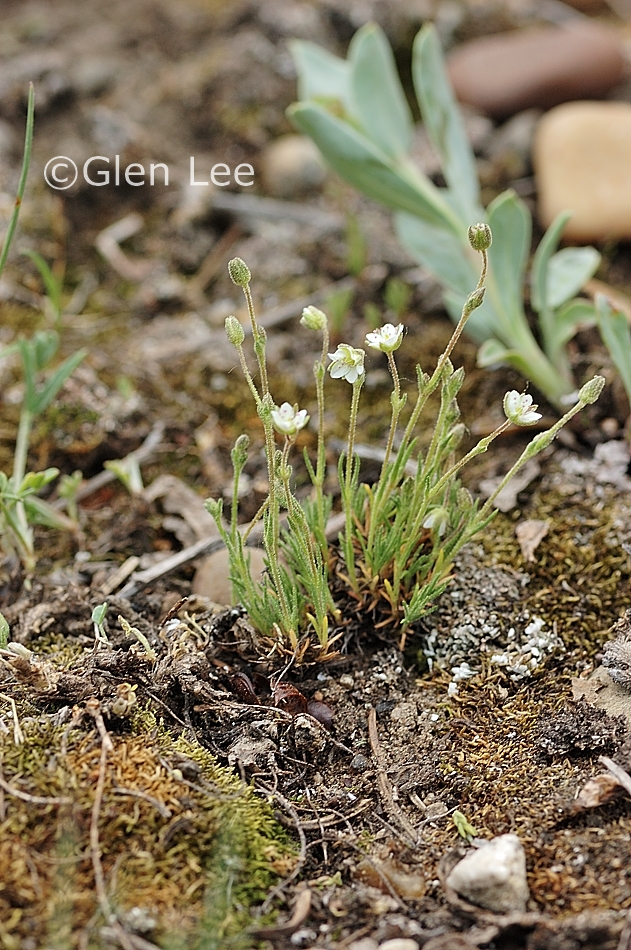
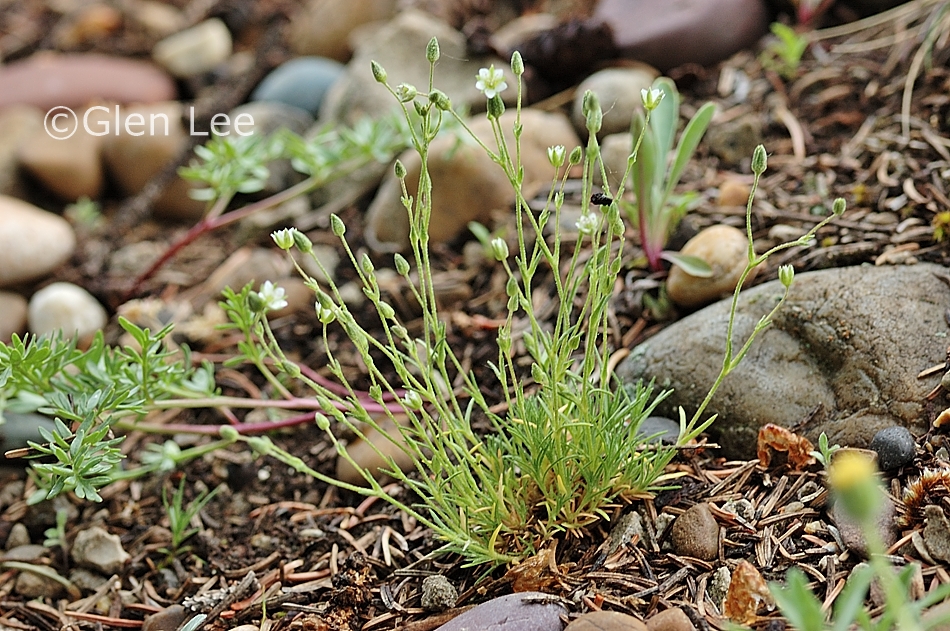
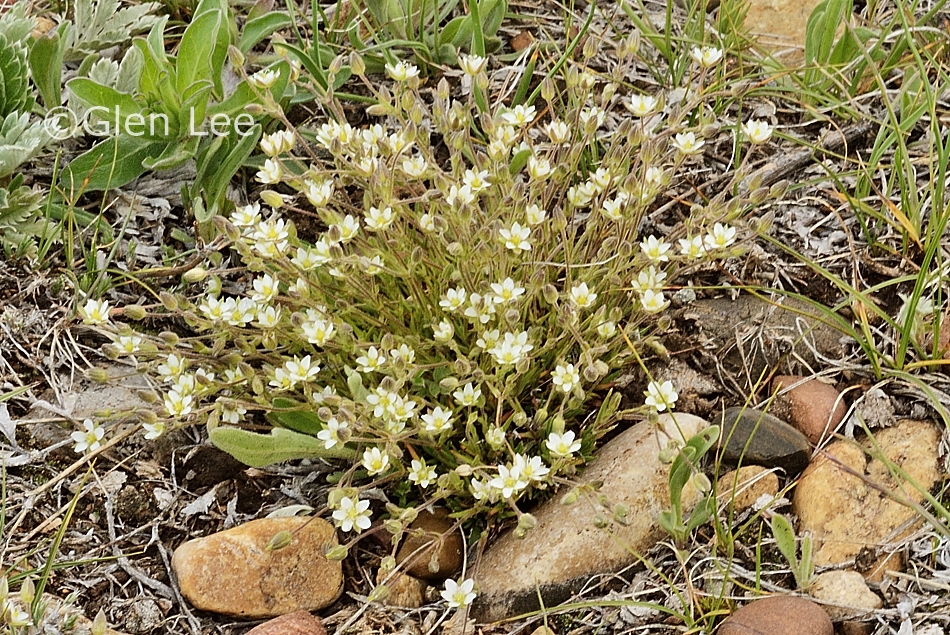
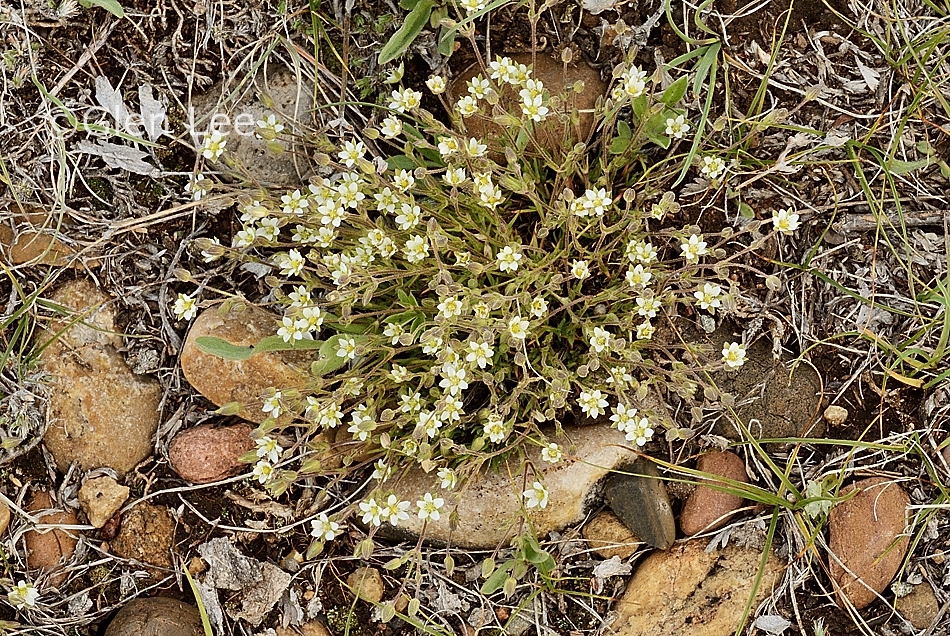
Looking straight down on plant.
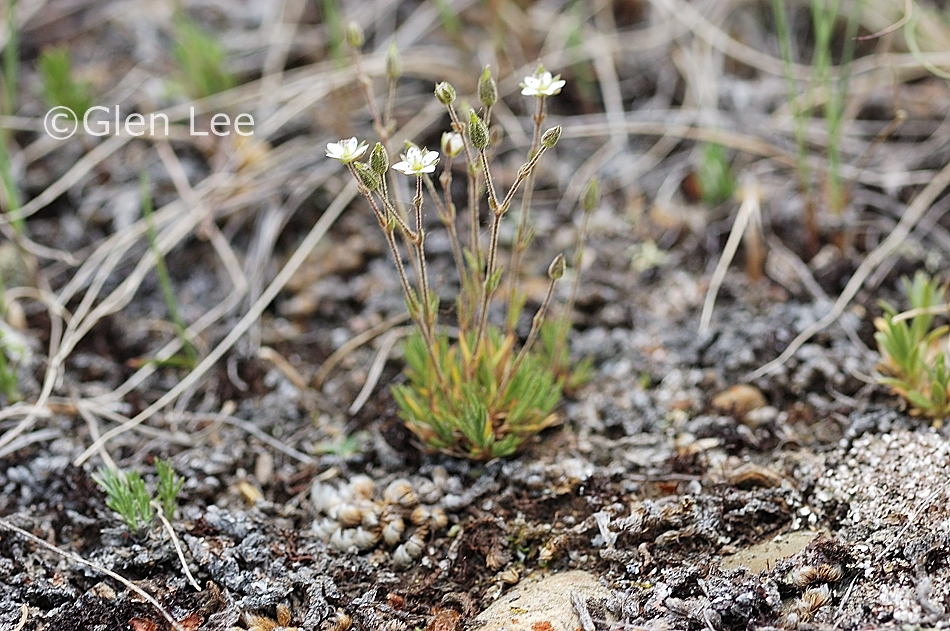
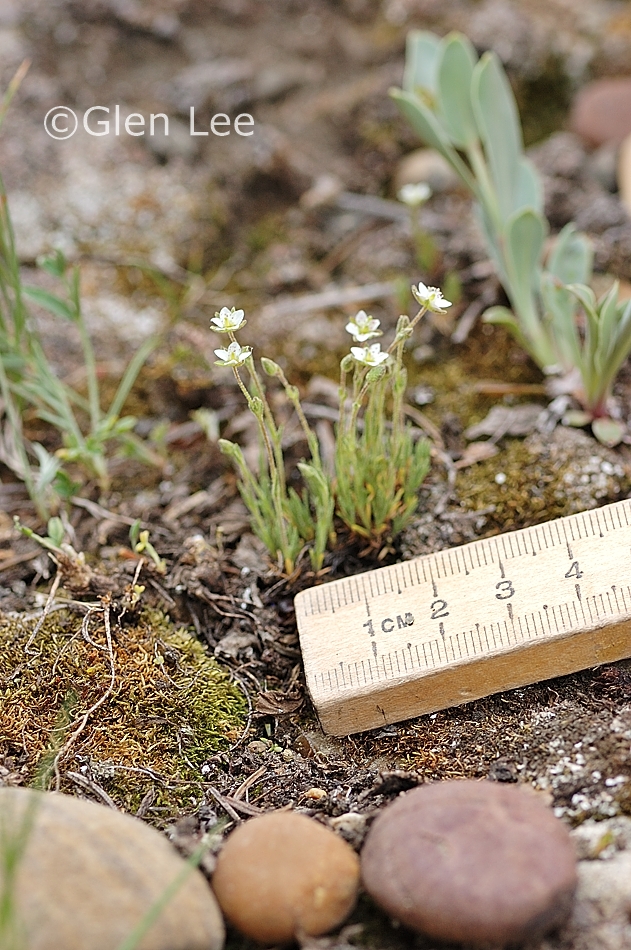
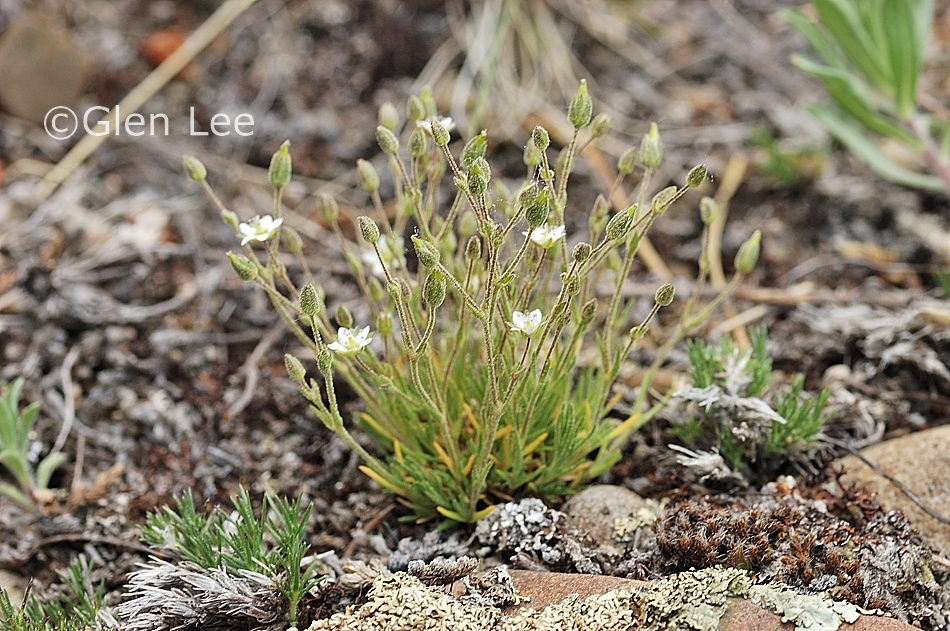
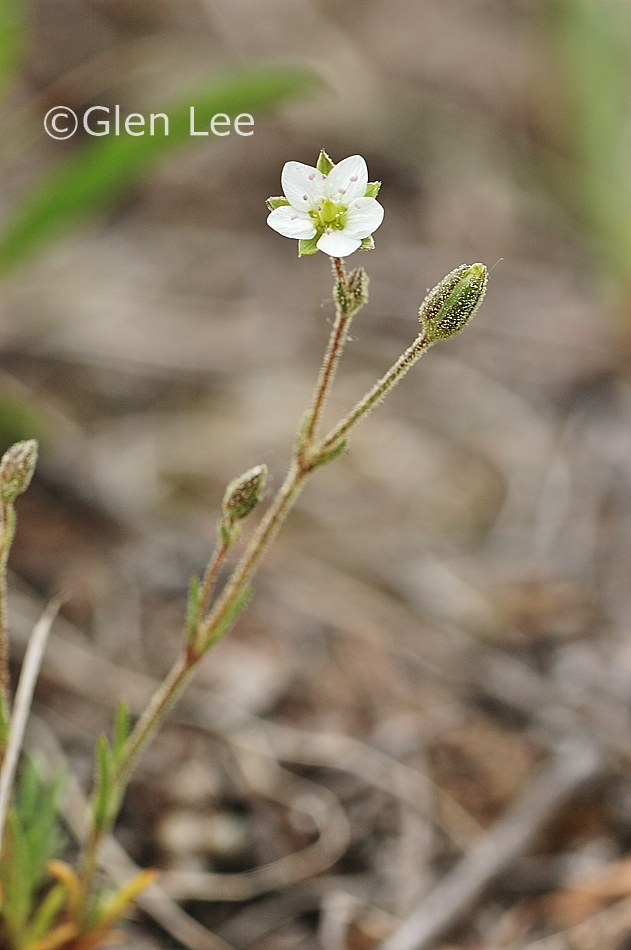
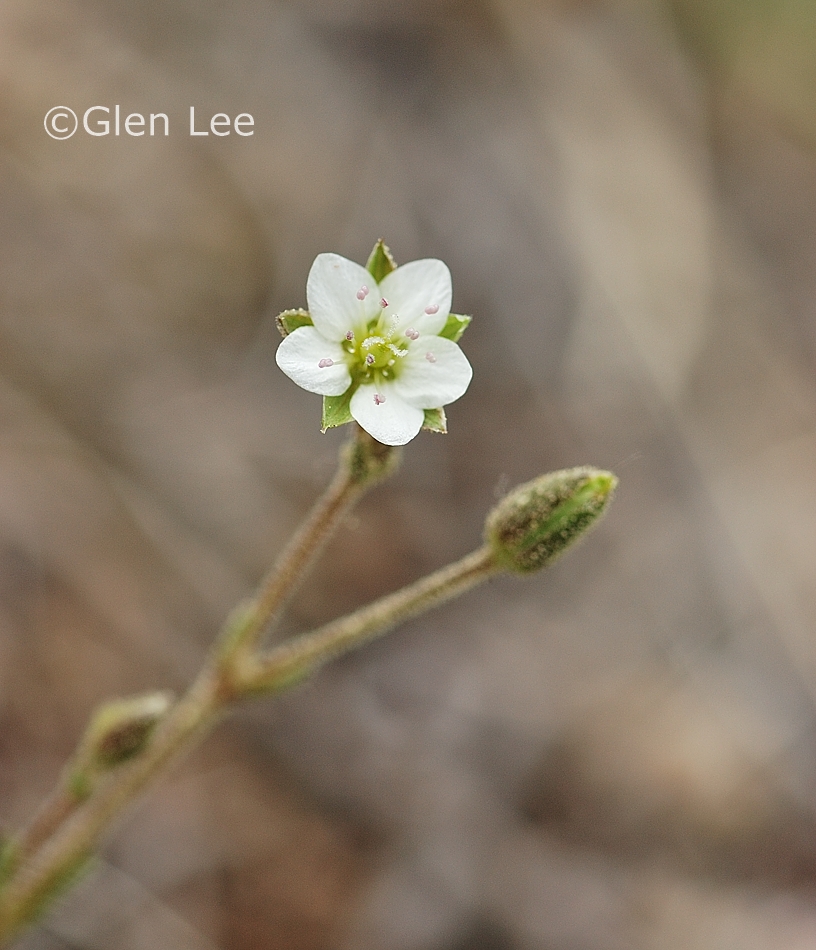
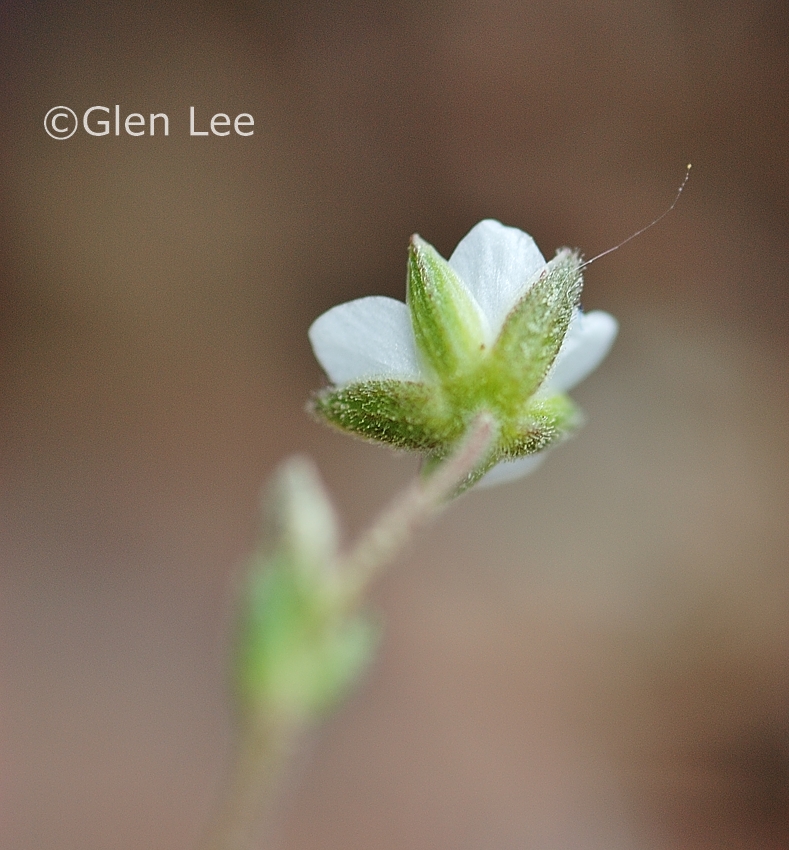
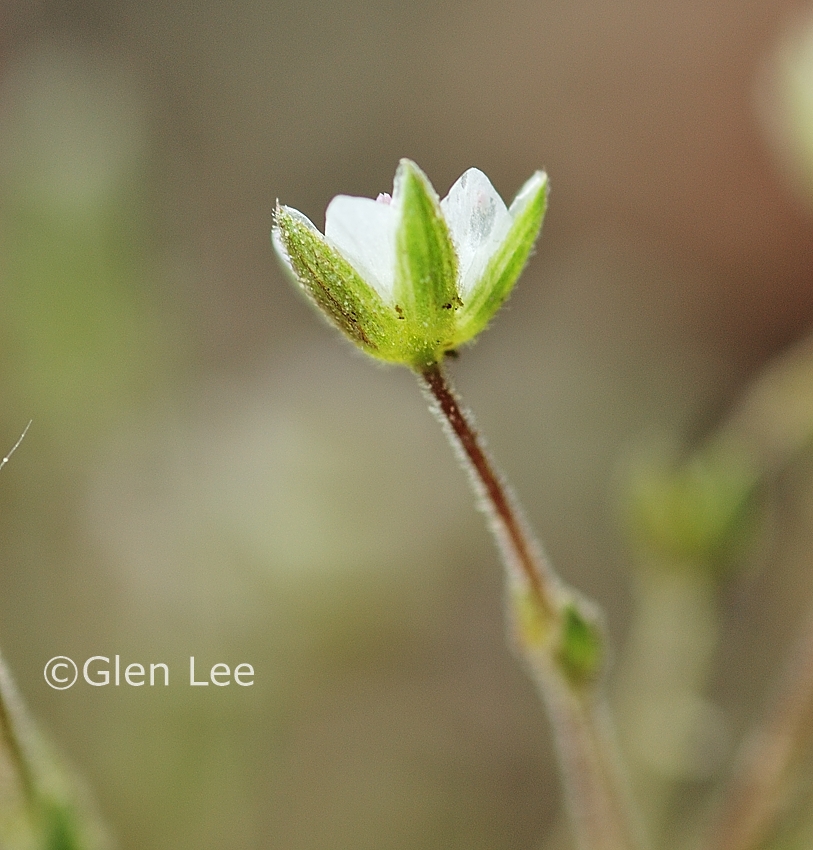
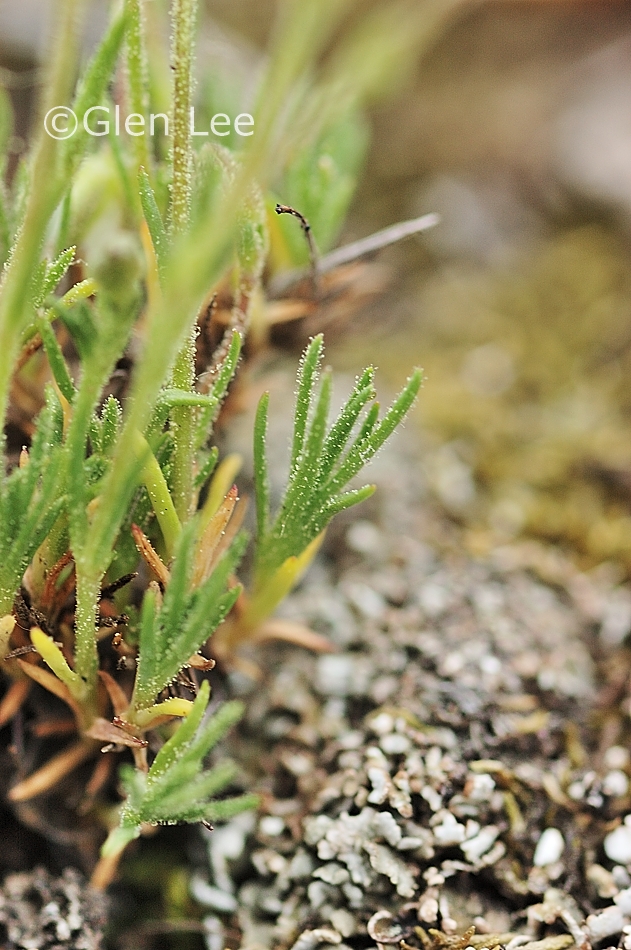
Basal
leaves in above photo
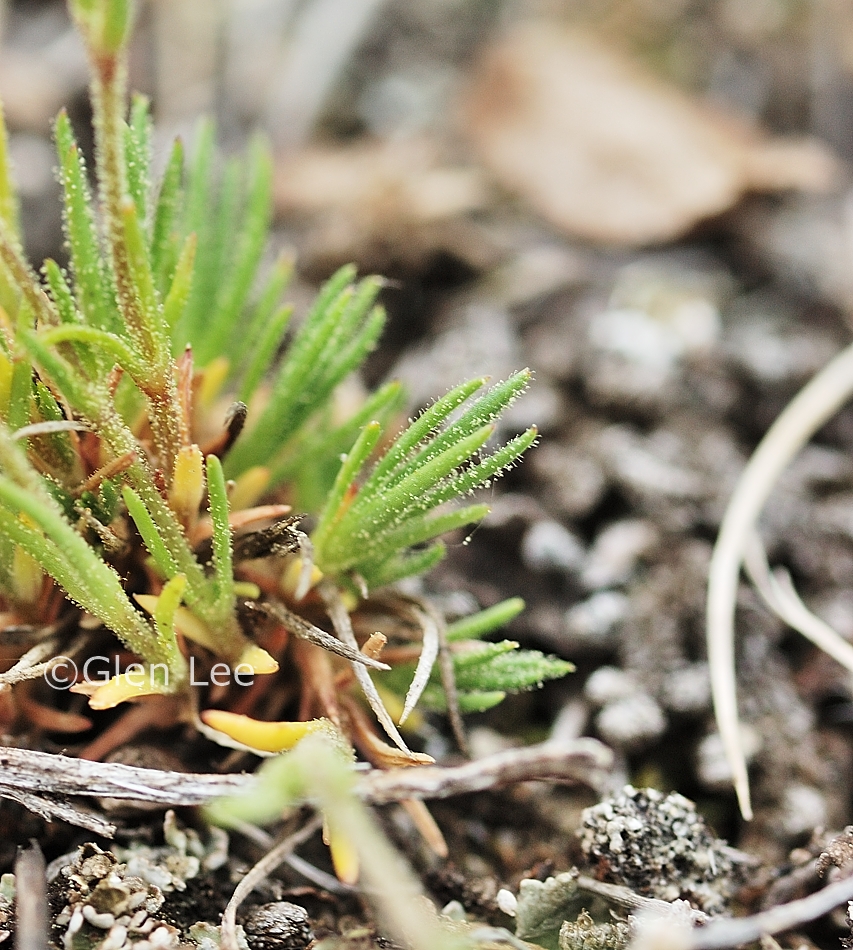
Basal
leaves in above photo
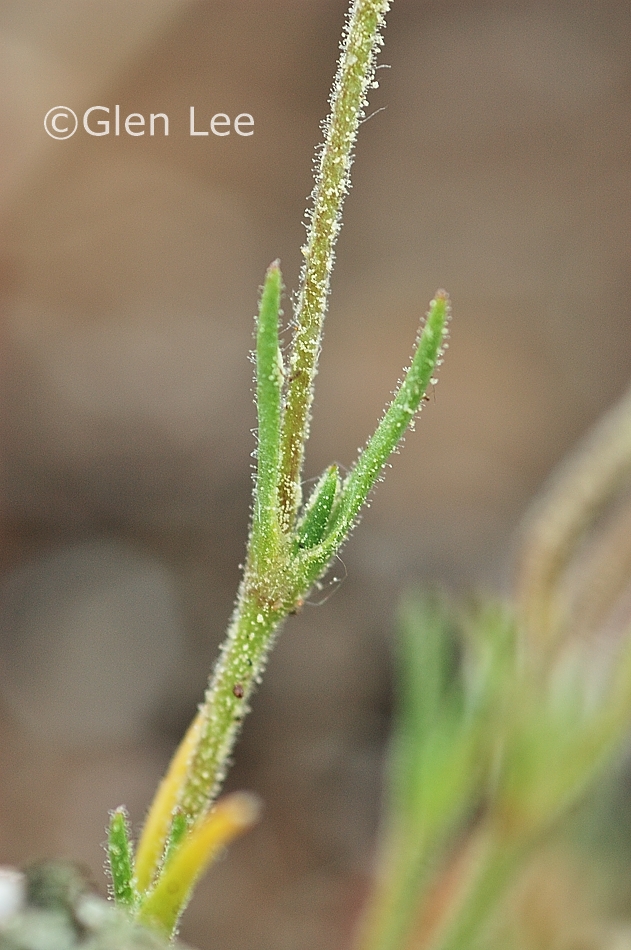
Stem
leaves in above photo
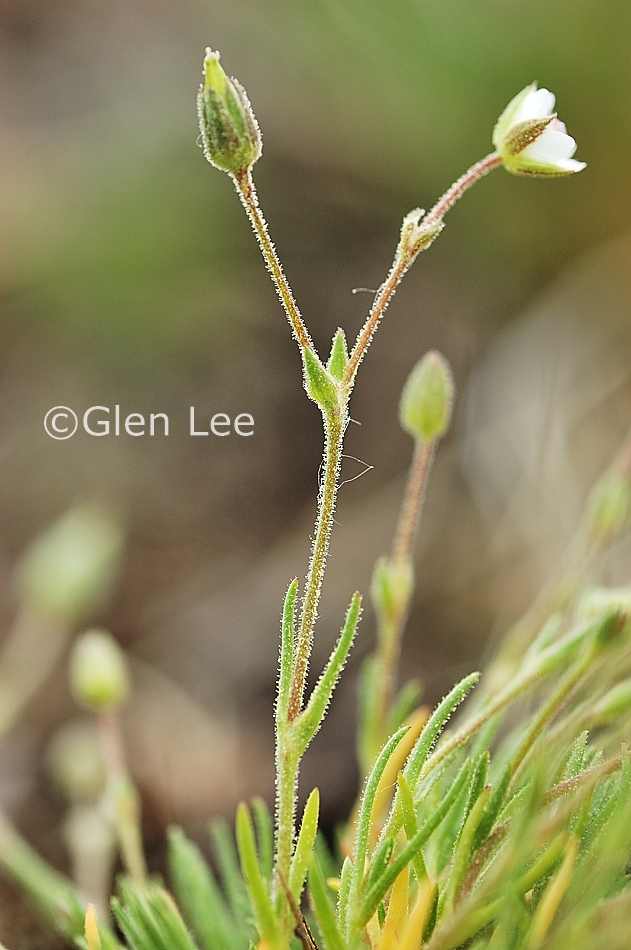
Stem
and basal leaves
Origin: Native.
General: Delicate plants with a tufted growth habit, stems numerous, and grass-like / filiform leaves. Plants are glandular puberulent.
Flowers: Flowering stem 2-3 branched, flowers 1-3 per stem in an open cluster, flowers measured at 5 mm in diameter. Flowers have 5 petals. Sepals longer than petals and the sepals have acute tips.
Leaves: Basal leaves to 9 mm long, less than 1 mm wide. Few stem leaves, reduced, opposite, filiform. Viewed in the herbarium under a microscope, the leaves can be seen to be 3-nerved, in the field I can't see the nerves when viewing the leaves with a loupe.
Height: Height is listed in Flora of Alberta from 2 to 18 cm, we measured plants from 4 to 9 cm tall.
Habitat: Dry, sandy, gravelly, open areas. Flora of Alberta lists this plant as native to NW Saskatchewan, and The Flora of Canada lists the plant as native to Lake Athabasca in Saskatchewan. However, the Fraser Herbarium at the University of Saskatchewan has several specimens of the plant collected in the Cypress Hills.
Abundance: Rare, ranked as an S3 (as of 2021) by the Saskatchewan Conservation Data Centre.
Synonym: Listed in some of the field guides we use as Arenaria rubella.
When and where photographed: Took the above photos and May 25th, top of a rocky butte, Cypress Hills about 425 km southwest of Regina, SK, and June 18th, rocky slope, Cypress Hills, southwest of our home in Regina, SK.